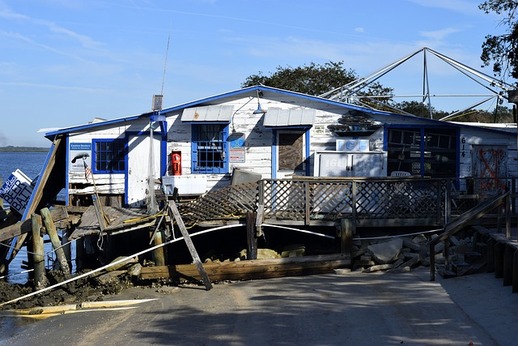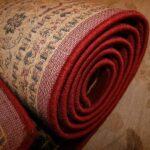
Managing water damage in an old house can be like traveling through time itself, with distinct difficulties and historical resonances. When beloved historic homes are threatened by water damage, taking care of the problems calls for a combination of consideration, knowledge, and doable solutions. In this guide, we take a straightforward yet in-depth look at how to handle water damage in an old house, breaking down the intricate details in language as clear as the wooden rafters that support these buildings.
Imagining old walls and creaking floors, bearing stories of a bygone era, suddenly having water seep in? From old plumbing to leaky roofs, these historic homes require a unique restoration approach. In this all-encompassing tour, we will guide you through the process of keeping the character of your historic home while successfully battling water damage.
See also our post on A Comprehensive Guide on Preventing Water Damage in Drought-Prone Areas
Understanding the Nature of Old House Construction
Different Building Materials
Older homes often use materials that differ from modern construction. Understanding the materials, such as lath and plaster walls, clay pipes, or knob-and-tube wiring, is crucial to addressing water damage effectively.
Unique Architectural Features
Old houses may have unique architectural features that affect water flow and drainage. Consider factors like steep roofs, decorative cornices, or foundation types when assessing water damage issues.
Prioritize Preservation
Balancing the need for repairs with the preservation of historical features is key. Prioritize restoration over replacement when possible to maintain the character and value of your older home.
Investigate Previous Repairs
Examine past repair work to identify potential weak points. Understanding the history of repairs helps in addressing recurrent issues and ensures a more thorough restoration process.
Consult with Preservation Experts
Engage with professionals who specialize in historic preservation. Their expertise can provide valuable insights into the unique challenges of old houses, guiding you in making informed decisions.
Identifying Common Sources of Water Damage
Roof Leaks
Older roofs may be more susceptible to leaks. Regularly inspect the roof for damaged shingles, flashing issues, or deteriorating materials that can contribute to water penetration.
Plumbing Issues
Antiquated plumbing systems are prone to leaks and corrosion. Check for signs of water damage around pipes, assess water pressure, and consider updating plumbing systems to prevent future problems.
Foundation Concerns
Older foundations can develop cracks and allow water intrusion. Periodically inspect the foundation for signs of damage and address any issues promptly to prevent further deterioration.
Window and Door Seals
Aging window and door seals may fail over time. Check for drafts and water seepage around windows and doors, and replace or repair seals as needed to maintain a watertight barrier.
Poor Drainage
Evaluate the grading around your home to ensure proper drainage. Redirect water away from the foundation and exterior walls to prevent water accumulation and potential damage.
Immediate Action Steps
Locate and Stop the Source
Identify and stop the source of water damage as soon as possible. Whether it’s a leaking pipe, a damaged roof, or flooding, taking swift action prevents further damage and mold growth.
Remove Standing Water
If there’s standing water, use pumps, wet/dry vacuums, or towels to remove it promptly. Standing water can lead to structural issues and create an environment conducive to mold.
Ventilate the Area
Ensure proper ventilation by opening windows and doors. Increased air circulation accelerates the drying process and minimizes the risk of mold and mildew.
Salvage Valuables
Protect your belongings by removing items from water-damaged areas. Salvageable items should be dried promptly to prevent further damage.
Disconnect Power
If water damage is significant, disconnect power in affected areas to prevent electrical hazards. Safety is paramount during the cleanup process.
Drying and Restoration Tips
Thorough Drying
Use fans, dehumidifiers, and proper ventilation to facilitate thorough drying. Pay extra attention to hidden spaces like crawl spaces and attics, which may require additional measures.
Preservation-friendly Restoration
Opt for restoration methods that align with historic preservation principles. Consult with professionals experienced in restoring older homes to ensure compatibility with original materials and aesthetics.
Address Mold and Mildew
Promptly address any signs of mold or mildew. Use mold-killing solutions and ensure thorough drying to prevent the recurrence of these issues.
Repairing Structural Damage
Repair structural damage caused by water, such as weakened beams or deteriorated wood. Work with contractors experienced in historical restoration to maintain the integrity of your old house.
Reevaluate Landscaping
Assess the landscaping around your home to ensure proper drainage. Adjust slopes and install drainage systems if needed to prevent future water damage.
See also our post on A Comprehensive Guide on Preventing Water Damage in an Urban Environment
Tips for Upgrading Old Systems
Plumbing Updates
Consider updating plumbing systems with modern materials to prevent leaks and improve water efficiency. Consult with professionals experienced in historic homes for preservation-friendly options.
Roof Maintenance
Regularly maintain and repair the roof to prevent leaks. Keep an eye on the condition of shingles, flashing, and gutters, and address issues promptly.
Window and Door Upgrades
Upgrade window and door seals with preservation-friendly materials. This not only improves energy efficiency but also prevents water intrusion.
Foundation Reinforcement
Reinforce the foundation to address existing issues and prevent future water penetration. Consult with preservation experts to ensure the modifications align with the historical nature of your home.
Exterior Weatherproofing
Apply preservation-friendly weatherproofing treatments to the exterior of your home. This helps protect against water damage while preserving the appearance of historic features.
Continuous Maintenance Practices
Regular Inspections
Conduct regular inspections of your old house to catch potential water damage issues early. Regular maintenance reduces the likelihood of extensive damage and preserves the integrity of your home.
Seasonal Checks
Perform seasonal checks on vulnerable areas, especially before heavy rain or winter weather. Address any issues promptly to prevent seasonal-related water damage.
Monitor Humidity Levels
Keep humidity levels in check, as excessive moisture can lead to mold growth. Use dehumidifiers if necessary, especially in basements and other damp areas.
Preserve Historical Features
When making repairs or upgrades, prioritize the preservation of historical features. Consult with preservation experts to ensure that any modifications align with the character of your old house.
Emergency Preparedness
Be prepared for emergencies by having essential tools, materials, and contacts on hand. Knowing how to respond quickly to potential water damage issues can mitigate the impact on your historic home.
Seeking Professional Guidance
Preservation Specialists
Engage with preservation specialists for comprehensive guidance. Their expertise ensures that any interventions align with the unique requirements of historic homes.
Restoration Contractors
Work with restoration contractors experienced in old house restoration. Their knowledge of preservation-friendly methods is crucial for maintaining the authenticity of your home.
Professional Assessments
Seek professional assessments of your home’s structural integrity and vulnerabilities. This can help you identify potential issues before they escalate, saving you time and money in the long run.
Local Historical Societies
Connect with local historical societies for additional resources and advice. They often have valuable insights into the preservation of old houses and can recommend reputable professionals.
Insurance Experts
Consult with insurance experts to ensure your policy adequately covers potential water damage in an old house. Knowing your coverage can alleviate financial stress during restoration.
See also our post on Water Damage Restoration Guide: How to Restore Property After a Disaster
Conclusion
After all, restoring an old house after water damage necessitates a careful balance between preservation and restoration. This comprehensive guide will teach homeowners how to protect their historical homes by providing them with the knowledge they need to identify common sources of water damage, take immediate action, and implement long-term upgrades. With these practical yet methodical tips, you can make sure that your old house will withstand the test of time and retain its charm and character for future generations.






